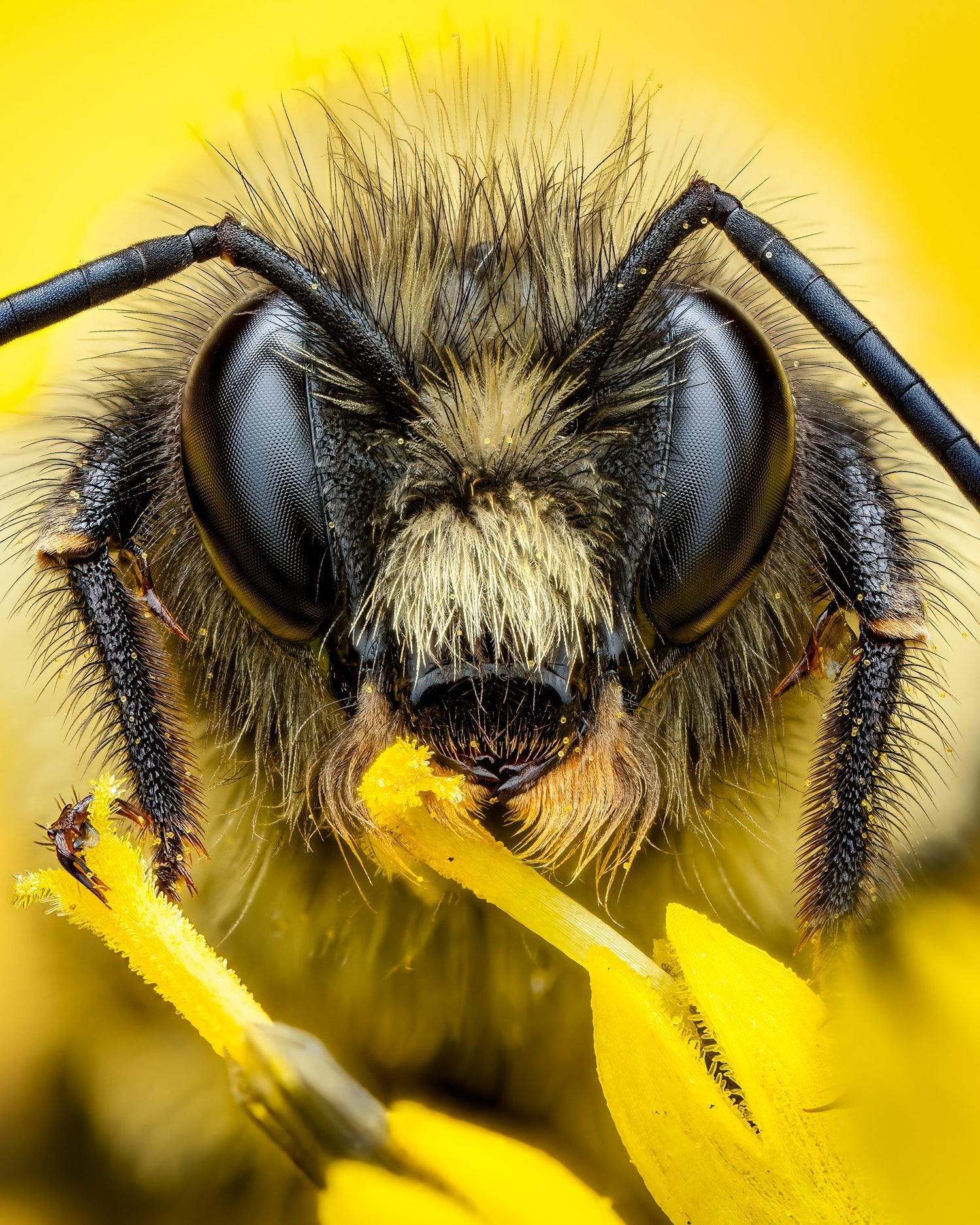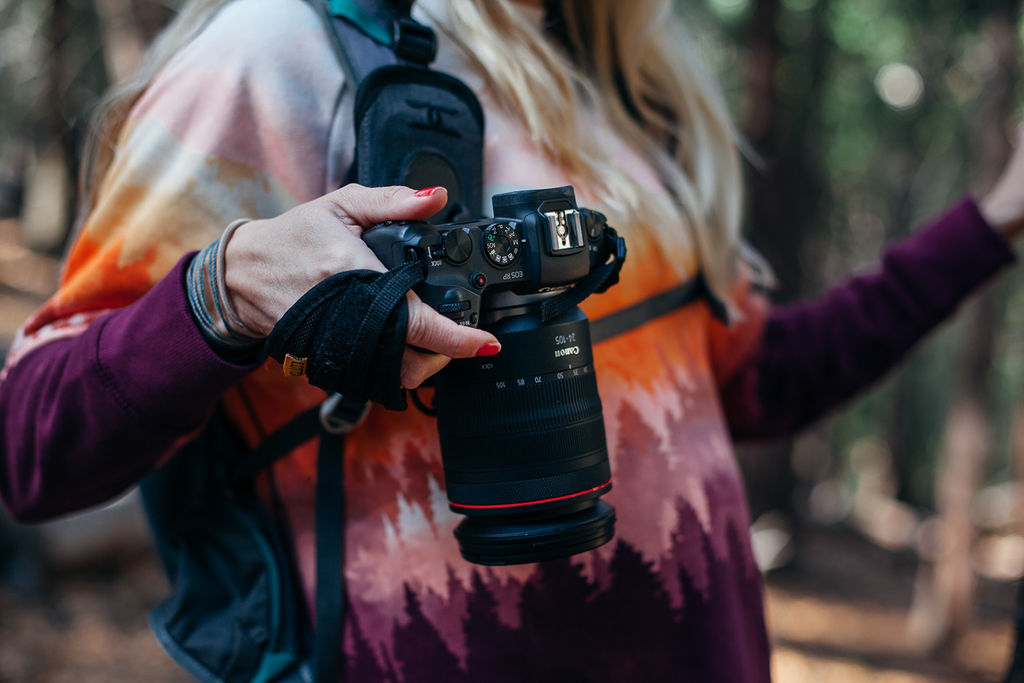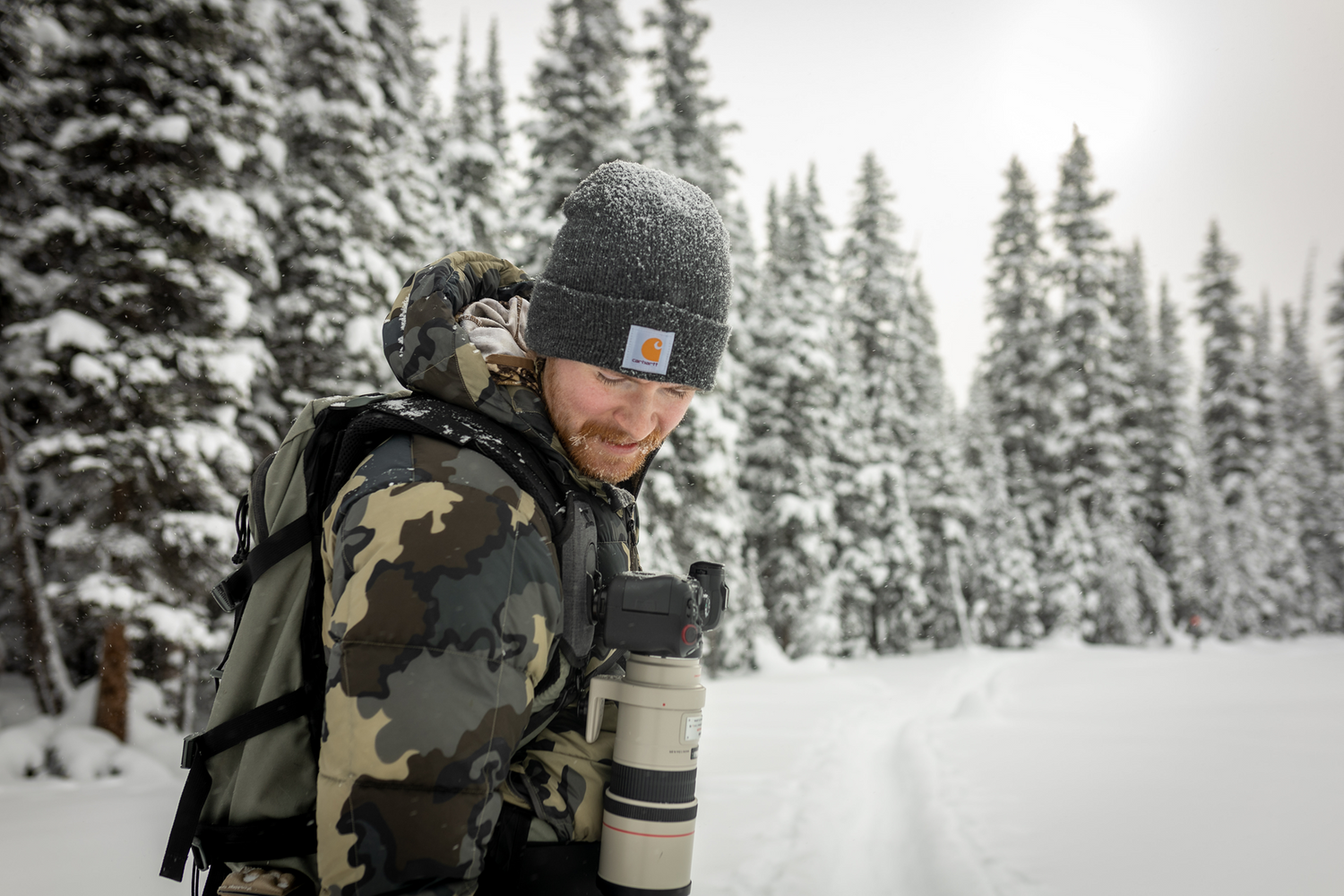A portrait of a vibrant male Habronattus americanus jumping spider
Cotton Carrier: Where do you call home?
Rory Wills: Right now, home for me is the beautiful Vancouver Island of British Columbia Canada, but I’ve lived my whole life in Southern Ontario and most of my photos have been taken here.
CC: How long have you taken photographs for unprofessionally and professionally?
RW: My photography journey started in the fall of 2019, after being introduced to the exciting world of insect macro photography on a trip for a university club. After being shown some high magnification photos of insects for the first time, I went and bought a camera within the week to start experimenting myself. While I am by no means a professional photographer, I’ve been fortunate enough to have some success in competitions over the last year of taking photos. One such example was my first-place finish in the “Things with Wings” category of the 2022 Canadian Geographic Wildlife Photographer of the year competition.
CC: How would you define your style as a photographer?
RW: I would define my style as a photographer as an up close and personal wildlife photographer, with a focus on the weird and wonderful. By that I mean I love to take portraits off natures oddities such as insects, spiders, fungi, slime molds, reptiles, etc, to try and show them off in a more positive light than what they are often perceived as by the public.

Some tiny springtails feasting on a slime mold .
CC: Have you ever gone to photography school?
RW: I am totally self taught with only some help from friends I’ve made through social media and at university.

The winning photograph titled “Aerial Assassin”
CC: Where is your favorite place or thing to shoot?
RW: My favorite place I’ve ever visited for photography was the dense jungles of Costa Rica. I got to photograph some insects and reptiles I could only ever dream of encountering. My favorite subjects to photograph are without a doubt dragonflies, as they have such mesmerizing and large eyes that look amazing under a macro lens.

A dragonfly with its incredible eyes

A very odd fly found in Costa Rica (Right)
CC: What Camera/Lens do you use?
RW: I use the OM System (formerly Olympus) EM1-Mark II body and Olympus 60mm Macro lens. This will always be my camera of choice for macro-photography! I also use an Olympus 40-150mm Pro lens for the occasional bird photography.
CC: What’s the craziest thing you’ve ever done to get “The Shot”?
RW: The craziest thing I’ve ever done to get “the shot” was getting up close and personal with one of the most venomous snakes of Central America, the Fer-de-lance. These snakes are a type of pit viper native to central America and are equipped with a powerful venom and defensive demeanour. With macro photography, you are required to get mere inches away from the subject to get a good shot and photographing one of these snakes definitely got my heart racing!

The deadly and beautiful Fer-de-lance viper!
CC: Who has inspired you as a photographer?
RW: All of my top inspirations are other macro photographers I’ve met through social media, such as Instagram. Some of my biggest inspirations are definitely @Cygnustech, @Deecoteephoto, @Xanadu.macro, and @Bens_small_world. These guys take some bug photos like no other and constantly inspire me to improve. They are all worth your time to check out!
CC: What advice would you tell an aspiring photographer?
RW: I would tell an inspiring macro-photographer to ask lots of questions and have fun with it! Most of us are just doing this as a hobby and as a means of showcasing some of the wonderful biodiversity of the macro world. There’s not a lot of information online for new insect macro photographers, so joining an online community and asking your peers lots of questions will be the best way to learn. There are an almost unlimited number of new bugs to discover, so get out there with your camera, experiment, and have fun exploring!
CC: How has photography shaped your day to day?
RW: After beginning my photography journey and quickly becoming totally obsessed, my day to day has been affected by adding significantly more early morning wake-ups. To photograph insects, they are often very fast and skittish in broad daylight, so the best time to get out is in the early mornings while they are “sleeping”. I used to love a sleep in, but now I’ll happily get out at the crack of dawn on a weekend morning to see what dewy gems I can find.

A damselfly covered in early morning dew
CC: Where has photography taken you, and made you experience?
RW: As previously stated, the most exciting destination photography has taken me so far is Costa Rica. While I haven’t had the chance to travel elsewhere (yet), I have big plans to travel much of the world to discover the amazing insects they have to offer. My biggest Wishlist destinations have to be the Australia, South America, South-East Asia, Madagascar, Sri Lanka and so much more! There truly are an endless number of places to visit all full of their own unique bugs to discover.
CC: Any cross promotion you’d like me to add info and links to?
As a cross promotion, here is an article I wrote for Olympus Cameras regarding some tips for doing insect macro photography. It could act as a nice resource for somebody to learn more and get into it!
https://learnandsupport.getolympus.com/learn-center/photography-tips/macro/photography-with-om-d-mzuiko-60mm-macro




